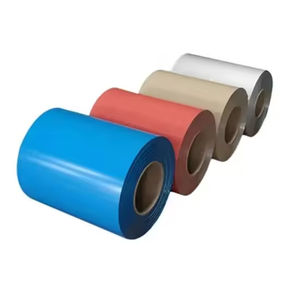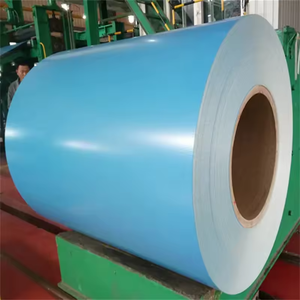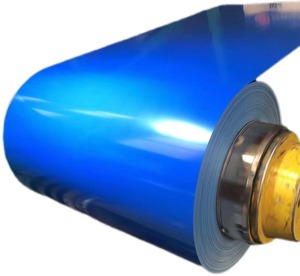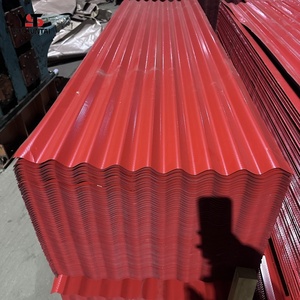
All categories
Featured selections
Trade Assurance
Buyer Central
Help Center
Get the app
Become a supplier

(22752 products available)








































Sheet metal for shed comes in various types, each with distinct properties and advantages, making it suitable for different applications, including construction, automotive, and machinery parts. Below are some of the most common types of sheet metals for sheds:
Stainless steel sheet metal is an alloy of steel, chromium, and other metals like nickel, providing excellent corrosion resistance, especially in humid or adverse weather conditions.
Features: Durable, resistant to rust, and requires minimal maintenance. Comes in types 304 and 316 for moderate and severe environments.
Uses: Commonly used in roofing, gutters, and trim.
Galvanized steel is carbon steel coated with zinc to prevent rusting upon exposure to moisture.
Features: Affordable, widely available, and offers good corrosion resistance.
Uses: Standardly used for roofing, siding, and outdoor storage.
Aluminum sheet metal is lightweight, non-magnetic, and relatively soft compared to other metals. It does not rust and is often mixed with other metals to form alloys.
Features: Highly resistant to oxidation, which forms protective layers against corrosion. Lightweight yet strong.
Uses: Used for trim, roofing, and even siding due to easy manipulation (e.g. bending, shaping).
Carbon steel is made from iron and carbon and offers a balance of strength and flexibility to its users.
Features: While strong and durable, it is prone to rust if not properly treated.
Uses: Primarily used in structural elements and tools where strength is paramount, though less common for outdoor shed exteriors without protective coating.
Sheet metal that has been pressed or rolled into the recognizable wavy shape. The ridges in corrugated metal offer extra strength and durability, making it ideal for roofing and siding.
Features: Increases rigidity, makes it lighter and easier to handle than flat panels.
Uses: Preferred for roofing sheets and walls in sheds, providing structural support and effective water runoff.
The commercial value and quality of sheet metal for shed are intimately connected to its resistance to environmental conditions, such as moisture and extreme temperatures.
Categorically, steel and aluminum dominate the market in terms of sales volume and overall cost efficiency. Stainless steel, while expensive, commands a high value in niche markets requiring longevity and low maintenance. Zinc and polymer-coated variants also attract users operating on a low-budget but high-performance demands.
Sheet metals with additional protective coatings, such as PVC Plastisol Coating, Polyurethane Coating, or Powder Coating, exhibit improved quality characteristics.
For instance, PVC Plastisol Coating is a thick vinyl coating that offers exceptional durability, weather resistance, and moisture retardance, making it fit for conditions with extreme temperatures.
Polyurethane Coating offers enhanced UV and chemical resistance, thus suitable for climates with high sun exposure. It is tacky in nature, therefore, good for prevention of slips.
Powder Coating involves applying a dry powder that forms a thick, durable finish. It's highly resistant to chipping, fading, and rusting. Powder-coated shed roofs and walls are particularly valued for aesthetic as well as protective functions, commonly used in residential and commercial applications.
The industry has been leaning towards sustainability by emphasizing therefore the recycling of metals such as aluminum and Galvalume. There is an expanding market for treated sheet metals along with demand for longer-lasting materials to decrease the need for frequent replacements.
Sheet metals have a higher commercial value based on aesthetic appeal and functionality; therefore, improvements in quality due to technological advancement ensure better product standards.
Buyers should meet several criteria or decisions when choosing shed sheet metal.
The thickness of sheet metal for shed varies in gauge, affecting flexibility and strength. Common thicknesses include 29-gauge for lightweight structures and 26-gauge or 24-gauge for more robust applications. These gauges offer a balance between manageability and the strength required to withstand outdoor elements. For more complex structures or heavy-duty applications, thicker sheets are also available. The standard thickness for such applications is typically 0.5 mm for simple structures and 1.0 mm or more for industrial-grade roofs.
The shed size and design are other factors influencing metal sheets options. Buyers should provide specific dimensions, like the length and width of the roof or walls, to fit corrugated or flat sheets. For complex designs involving trims, ridges, or custom angles, a precise shop drawing is necessary. The buyer's purpose should also decide the metal choice - a storage shed for tools may need lightweight metal, while a workshop requires heavier, more resilient material.
Lastly, color and finish options are available for the shed's appearance. These include protective coatings, such as zinc or Galvalume, which boost the shed's aesthetic value and corrosion resistance. Other decisions buyers should pay attention to include the type of sheet metal, choices between stainless steel, aluminum, galvanized steel, and the suffixes that come with them, like the Plastisol, polyurethane, and powder coating.
Choosing the right sheet metal for a shed requires careful consideration of several key factors. Durability is essential; the sheet metal should resist rust, especially in humid environments. The shed's location dictates the type of metal; coastal areas benefit from stainless or galvanized steel due to salt air.
Cosmetic appeal also matters, and picking the right color and finish would ensure the shed matches other yard installations or homes. Buyers should pay particular attention to the gauge or thickness of the sheet metal. The lower the gauge number, the thicker the metal, hence the stronger. While lightweight metals like 29-gauge suffice for small sheds, larger ones necessitate heavier gauge for robustness.
Also, the roof pitch needs consideration when choosing corrugated vs. flat sheets. For shallow roofs, flat sheets are better, but corrugated is the ideal option for steeply pitched roofs, as water would run off it more quickly.
The choice of sheet metals for a shed depends on buyers' intended use and budget. The most used type is galvanized steel. It is affordable, corrosion-resistant, versatile, and relatively easy to cut and install. Other metals, like aluminum, carbon, and corrugated sheet metals, are also gaining popularity because of their biodegradable and stunning properties.
The price of metal sheets can generally be affected by factors such as the gauge number, shed size, sheet finish, and local availability. While the gauge number relates to the thickness of the sheets, the size and complexity of the shed would also influence the number of sheets required, consequently impacting the total cost.
Other things to consider are the type of coatings and customizations available, as well as the shipping costs.
A1: The gauge ideal for sheds is usually in the range of 26 to 29. The thickness of metals in this range is sufficient to provide the required structural support while preventing bending. Also, the gauge number is low enough to prevent corrosion.
A2: While most types of sheet metals rust when left uncoated, types like stainless steel, galvanized steel, and aluminum sheets are highly resistant to corrosion, especially when exposed to moisture.
A3: While rusting steel sheets are fit for roofing a shed since they are hard and worn-resistant, the rough surface might trap debris and water.
A4: Galvanized steel is denser and stronger than aluminum, hence heavier than the latter. Although aluminum is weaker, it would still be stronger than pure galvanized steel.